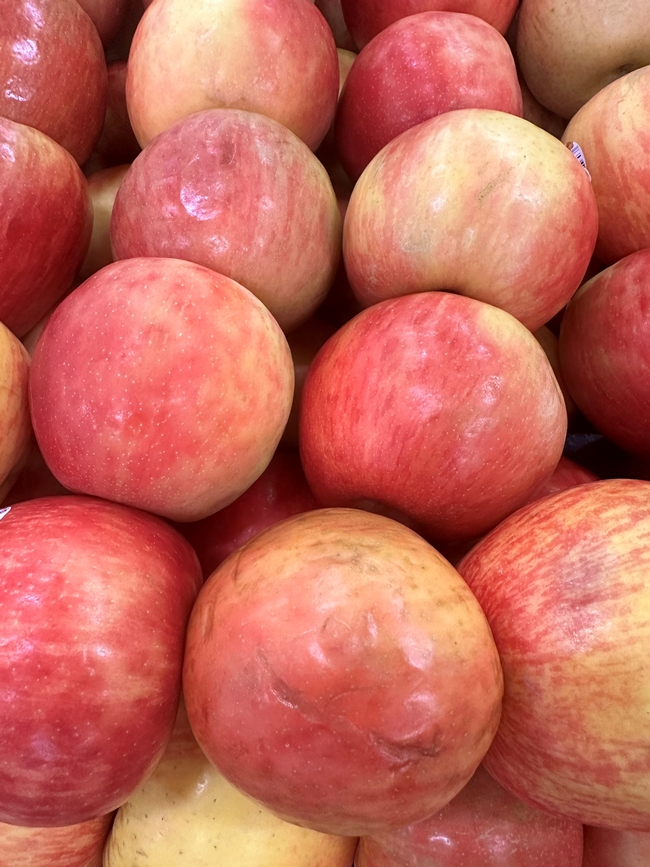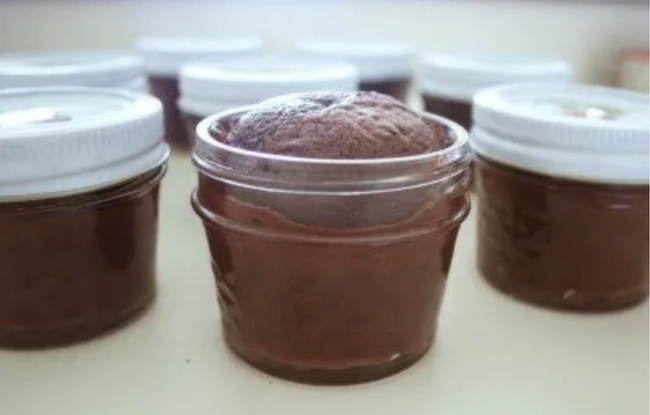
Are you passionate about preserving food? Do you love the idea of teaching others how to do the same? If you've got a volunteer spirit and enjoy working with a community of like-minded enthusiasts, the UC Master Food Preserver Program might be your next adventure!
We're looking for individuals who want to help spread knowledge about home food preservation and food safety. Whether you're already a seasoned preserver or simply curious, you don't need prior experience—just a passion for learning and teaching others! As a certified UC Master Food Preserver, you'll be part of a team dedicated to empowering our community with safe, effective food preservation techniques.
What You'll Gain:
- Extensive hands-on training in various home food preservation methods.
- Food safety to prevent foodborne illness.
- The chance to teach and make a real difference in your community.
- A supportive network of food preservation enthusiasts to learn from and collaborate with.
Mandatory Info Meeting
Join us for an informational meeting on Saturday, October 26, 2024, at 10:00 AM to learn more about how you can become part of this exciting program. Attendance at this meeting is required to apply for the certification training, which begins in February 2025.
Ready to Make a Difference?
This opportunity is open to adult residents of San Joaquin County. For more details, including training class dates and how to register for the informational meeting, visit our website here.

Freezing Baked Apples and Apple Slices
Freezing is one of the easiest methods to preserve apples for future use. Baked apples, with their tender texture and aromatic spices, are a perfect treat to enjoy throughout the year. To freeze, core and add brown sugar, butter, cinnamon, and nutmeg. Bake them until barely done. Then, cool the apples quickly. Wrap each apple individually in plastic wrap and place them in a freezer-safe bag or container. Seal and Freeze. To serve hot, unwrap the apples and heat frozen at 350°F until steaming hot, about 15-20 minutes, filling your kitchen with that delightful, spiced aroma. To serve cold, keep apples in plastic wrap and place in refrigerator until thawed.
Source: Adapted from So Easy to Preserve, 2014, pg. 312.
Freezing sliced apples is equally simple and versatile. Start peeling, coring, and slicing your apples. To pretreat fruit, use one of the three methods (ascorbic acid, citric acid, or lemon juice). Toss slices in this mixture to prevent browning, then steam blanch them for 1 ½-2 minutes. Cool quickly in ice water, drain, and dry. To freeze place slices in a single layer on a baking sheet. Once frozen, transfer the slices to freezer bags.
Use them later for pies, crisps, or to add a fresh apple flavor to oatmeal or pancakes. You can also use them in savory dishes like pork chops with apple sauce or apple-stuffed chicken breasts.
Source: Adapted from So Easy to Preserve, 2014, pg. 267
Dehydrating Apple Slices and Fruit Leather
For a delicious and healthy snack, consider dehydrating apple slices. Begin by slicing apples 1/8 inch thick and dip them in one of the above pretreatment mixtures. Then steam blanch them for 3-5 minutes. Sprinkle with cinnamon or leave them plain, then lay them on dehydrator trays. Dry at 135°F for about 6-12 hours or until they are leathery and crisp. Be sure to condition apple slices before moving to the pantry. These dried apple chips are perfect for snacking, adding to trail mix, or using as a crunchy topping for salads or yogurt.
Source: Adapted from So Easy to Preserve, 2014, pg. 342-343
Apple fruit leather is another fantastic way to preserve the sweet taste of apples. Puree peeled cored apples with a bit of honey and cinnamon. Spread the puree thinly on dehydrator sheets or parchment-lined baking sheets. Dry at 140°F until the leather is pliable and no longer sticky, about 6-12 hours. Roll up the leather and store it in airtight containers after conditioning.
It's a fun and portable treat for kids and adults, perfect for lunchboxes or a midday snack.
Source: Adapted from So Easy to Preserve, 2014, pg. 254
Apple Scrap Jelly: Waste Not, Want Not
The saying "waste not, want not" rings true in the world of food preservation. The following apple scrap jelly is an excellent way to use the cores and peels left over from other apple preparations.
Apple Scrap Jelly
Yield: about 6 half-pints
Ingredients
4-1/2 cups apple juice prepared from apple peels and cores
5 cups sugar
1 box powdered pectin
Directions for Preparing Juice
Place peels and cores into a pan. Add up to 1 cup of cold water per pound of fruit. Boil on high heat; stir to prevent scorching. Reduce heat and simmer for 15 minutes. Do not overcook; excess boiling destroys the pectin, flavor, and color. Pour everything into a damp jelly bag and suspend the bag to drain the juice. Clear jelly comes from juice dripped through a jelly bag without pressing or squeezing. If a fruit press is used to extract the juice, restrain the juice through a jelly bag.
Instructions for Making and Processing Jelly
- Wash your hands with soap and water
- Clean and sanitize preparation area
- Wash and rinse jars and lids, following the manufacturer's directions for lid preparation.
- Sterilize canning jars by boiling or steaming for 10 minutes at altitudes of less than 1,000 feet. At higher elevations, boil jars for 1 additional minute for each additional 1,000 feet elevation.
- Pour prepared apple juice into a large saucepan. Stir in pectin and bring to a full rolling boil over high heat, stirring constantly.
- Add sugar, stirring to dissolve. Return to a boil over high heat; boil hard for 1 minute, stirring constantly. Remove from heat. Skim foam.
- Ladle hot jelly into prepared jars, leaving 1/4-inch headspace. Wipe rims with a dampened, clean paper towel; adjust two-piece metal canning lids.
- Process jars according to table 1.
|
Table 1. Recipe from the National Center for Home Preservation 2019 |
||||
|
Processing time for Apple Scrap Jelly in a boiling-water canner |
||||
|
|
Process Time at Altitudes of |
|||
|
Style of Pack |
Jar Size |
0-1,000 feet |
1,001-6,000 feet |
Above 6,000 feet |
|
Hot |
Half-pints or Pints |
5 minutes |
10 minutes |
15 minutes |
- Remove jars from the canner and cool completely on a clean, dry towel.
- Check seals after 12-24 hours; lids should not flex up and down when the center is pressed.
This jelly captures the authentic flavor of apples and is a beautiful addition to toast, biscuits, or as a glaze for meats and vegetables.
Apple Pie Filling: The Essence of Fall in a Jar
Nothing says fall quite like a warm, bubbling apple pie. By preparing and preserving apple pie filling, you can have the essence of fall at your fingertips all year round, ready to be transformed into a comforting pie whenever you desire.
Apple Pie Filling
Yield: about 7 Pints
Ingredients
12 cups sliced, peeled, and cored apples, treated to prevent browning
2¾ cups granulated sugar
¾ cup ClearJel
1½ tsp ground cinnamon
½ tsp ground nutmeg
2½ cups unsweetened apple juice
1¼ cups cold water
½ cup bottled lemon juice
Instructions
- Wash your hands with soap and water.
- Clean and sanitize the preparation area.
- Wash and rinse jars and lids; keep jars hot until used. Follow the manufacturer's directions for lid preparation.
- In a large pot of boiling water, blanch apple slices for 1 minute. Remove with a slotted spoon and keep warm in a covered bowl. It is best to work with 6 cups at a time
*To prevent browning, treat apple slices or submerge cut apples in a mixture of ¼ cup bottled lemon juice and 4 cups water.
- combine sugar, ClearJel, cinnamon, and nutmeg in a large pot. Stir in apple juice and cold water. Bring mixture to a boil over medium-high heat, stirring constantly, and cook until it thickens and begins to bubble.
- Add bottled lemon juice and boil for 1 minute, stirring constantly. Remove from heat.
- Drain apple slices and fold into hot mixture; heat, stirring, until apples are heated through.
- Ladle hot pie filling into hot jars, leaving 1-inch headspace. Remove air bubbles and adjust the headspace if needed.
- Wipe the jar rims clean, center the lids on the jars, and apply bands until fingertip tight.
- Process jars according to Table 2.
|
|
Table 2. Recipe from Ball Complete Book of Home Preserving 2012 |
||||||
|
|
Processing time for Apple Pie Filling in a boiling-water canner |
||||||
|
|
|
Process Time at Altitudes of |
|||||
|
Style of Pack |
Jar Size |
0-1,000 feet |
1,001-3,000 feet |
3,001-6,000 feet |
Above 6,000 feet |
||
|
Hot |
Pints |
25 minutes |
30 minutes |
35 minutes |
40 minutes |
||
- Remove jars from the canner and cool completely on a clean, dry towel.
- Check seals after 12-24 hours; lids should not flex up and down when the center is pressed.
This filling is perfect for pies, cobblers, crisps, or over ice cream for a quick and satisfying dessert.
Incorporating Your Preserved Apples into Cooking
Preserved apples offer endless possibilities for enhancing your cooking. Use frozen apple slices in savory dishes, such as roasting them with root vegetables or as a sweet addition to a slow-cooked pork roast. Dehydrated apple slices make for excellent croutons in a fall-inspired salad with pecans and cranberries. Apple scrap jelly adds a lovely glaze to chicken or pork, while apple pie filling can turn a simple breakfast into a decadent delight when spooned over pancakes or waffles.
Whether you're warming up a frozen baked apple for a cozy evening dessert, enjoying a chewy piece of apple fruit leather on a brisk autumn hike, or sharing a slice of homemade apple pie with friends and family, preserving apples allows you to carry the warmth and nostalgia of the fall harvest with you throughout the year. The scent of apples and spices wafting from your kitchen, the satisfaction of transforming fresh fruit into delightful preserves, and the joy of sharing these creations with loved ones are the simple pleasures that make fall truly special.
- Author: Sherida Phibbs (vol)

Response: Thank you for contacting us with your question about canning breads and cakes to give as gifts.
Baking cakes or breads in canning jars and sealing them immediately after removing them from the oven has become a popular trend on social media. However, this practice is not only unsafe but also poses a significant risk of botulism, a potentially fatal foodborne illness. Here's why you should avoid this method:
The Process is Not Canning - As Penn State Extension explains, the actual process of baking bread or cake in a jar is not a form of canning. The product is baked in an open glass canning jar, and then a canning lid is placed on the jar immediately after it is removed from the oven. There is no further canning process applied, which means that the safety protocols essential for preventing botulism are not followed.
Moisture Content and Microorganism Survival - Many cake and bread recipes include ingredients like fruits, liquids, or vegetables, which increase the moisture content of the product. This added moisture creates a rich environment where microorganisms, including harmful bacteria, can survive and thrive. Additionally, the process of sealing the jar does not remove all the oxygen, leaving some available for these microorganisms to grow.
pH Levels and Pathogen Growth - Cakes and quick breads often have little or no acid, resulting in a pH above 4.6. Foods with a pH level above this threshold can support the growth of pathogenic organisms, including Clostridium botulinum, which causes botulism. Botulism is a severe and often fatal illness, and there are reported cases each year linked to improper canning practices.
Heat-Stable Bacteria and Underbaking - Studies conducted by various universities have shown that some bacteria are heat-stable and can survive the baking process. These bacteria can multiply during storage, leading to potential foodborne illness. Moreover, underbaked products are another serious issue with many available recipes, further increasing the risk.
Commercial vs. Home Methods - Commercially produced cakes and breads in jars are made safe by using additives, preservatives, and strict processing controls that ensure the food safety of the finished product. Currently, there are no reliable or safe home recipes for baking and sealing cakes or breads in jars and storing them at room temperature for extended periods.
Avoid the Risk - Using this technique to preserve cakes and breads is not recommended. The combination of high moisture content, low acidity, and the lack of a proper canning process creates a perfect environment for dangerous bacteria to grow, leading to a serious risk of botulism. Despite the popularity of this practice on social media, it is not safe, and the potential consequences far outweigh any perceived convenience or novelty.
By sharing this information, we can help prevent foodborne illnesses and ensure that people are aware of the dangers associated with baking cakes in canning jars.
RESOURCES AND PHOTO CREDIT
PennState Extension https://extension.psu.edu/food-preservation-setting-the-record-straight-on-canning-breads-and-cakes/

But as you prepare to enjoy and share your culinary creations, it's crucial to remember food safety, especially when transporting dishes or storing leftovers. The key factors to keep in mind are time and temperature.
Understanding the Danger Zone Bacteria that can cause foodborne illnesses thrive between 40°F and 140°F. While refrigeration and freezing slow bacterial growth, they don't stop it completely. The general rule is to follow the "Two-Hour Rule"—don't leave hot foods below 140°F or cold foods above 40°F for more than two hours. Beyond this time, bacteria can multiply rapidly, increasing the risk of spoilage and foodborne illness.
Safe Transportation and Serving Tips If you're bringing perishable food to a holiday gathering, plan to serve it within two hours of preparation, or ensure it is properly cooled and reheated. Keep hot dishes on the stove or in the oven until they're ready to be served. Remember that microwaving alone may not be enough to ensure food safety; reheating on the stove or in the oven until it reaches a rolling boil is necessary, especially for liquids like gravy.
Desserts made with raw dairy or eggs, such as eggnog or cakes with whipped cream or cream cheese frosting, should also be kept refrigerated until served. Keeping these desserts cold minimizes the risk of bacterial growth.
Storing and Using Home-Canned Foods Properly canned foods can last a very long time if stored correctly. Store labeled jars (with content and processing date) in a clean, cool, dark, and dry place. Ideally, storage temperatures should be between 50°F and 70°F.
However, over time, even home-canned foods can lose quality and nutritional value. It's best to consume them within a year for the best flavor and texture, although they remain safe to eat as long as the seal remains intact. Make sure to use the oldest jars first. Discard any jars with leaking seals, bulging lids, or other signs of spoilage.
Making the Most of Leftover Bones and Scraps Turkey, ham, and beef bones can be transformed into a nourishing soup base or stock. Also, save those vegetable trimmings to throw into the stock. The stock can be canned using a pressure canner or frozen for future use. Visit the National Center for Home Food Preservation website for broth/stock recipes to pressure can.
Handling Leftovers In my home, we always look forward to the leftovers. Love those turkey and cranberry sandwiches, and easy dishes like casseroles. However, it's essential to handle leftovers correctly to prevent spoilage. Cool hot foods quickly by storing them in shallow containers no more than two inches deep and refrigerate or freeze them within two hours of cooking.
When reheating leftovers, make sure they reach an internal temperature of at least 165°F. Gravy and soup should be brought to a steady boil. Leftovers like stuffing and gravy should be consumed within one to two days, while refrigerated cooked poultry, ham, casseroles, and vegetables can last three to four days. Desserts like cream pies and cheesecake should be eaten within two to three days (though this usually isn't a problem in my home!).
Here are some creative and delicious ideas for using up your Thanksgiving leftovers: These ideas transform your leftovers into exciting new meals that capture the flavors of Thanksgiving in fresh and unexpected ways!
1. Thanksgiving Leftover Sandwiches
- Classic Turkey Sandwich: Layer slices of turkey, stuffing, cranberry sauce, and mashed potatoes between two slices of toasted bread. Add a smear of mayo or gravy for extra flavor.
- Thanksgiving Panini: Use a panini press to grill a sandwich filled with turkey, stuffing, cranberry sauce, and a slice of cheddar cheese for a crispy, melty treat.
2. Turkey and Stuffing Casserole
- Combine chopped turkey, leftover stuffing, and a mix of leftover vegetables (like green beans or carrots) in a casserole dish. Mix in some gravy or cream of mushroom soup to bind it together, top with shredded cheese, and bake until golden and bubbly.
3. Mashed Potato Pancakes
- Mix leftover mashed potatoes with an egg, a handful of shredded cheese, and a bit of flour to create a batter. Form into small patties and fry in a hot skillet until crispy and golden on both sides. Serve with a dollop of sour cream or cranberry sauce.
4. Thanksgiving Shepherd's Pie
- Use leftover turkey, vegetables, and gravy as the filling for a shepherd's pie. Spread a layer of mashed potatoes on top and bake until the top is browned and crispy.
5. Turkey Cranberry Quesadillas
- Spread cranberry sauce on a tortilla, layer with turkey and a sprinkle of cheese, then top with another tortilla. Cook in a skillet until the tortilla is golden and the cheese is melted. Serve with a side of sour cream or leftover gravy.
6. Stuffing Waffles
- Press leftover stuffing into a waffle iron to create savory waffles. Top with turkey, a fried egg, or a drizzle of gravy for a unique brunch dish.
7. Turkey Pot Pie
- Combine turkey, leftover vegetables, and gravy, then cover with a pastry crust or use leftover pie dough. Bake until the crust is golden brown and flaky.
8. Cranberry Sauce Smoothie
- Blend cranberry sauce with yogurt, a banana, and a bit of milk for a tart and sweet smoothie.
9. Thanksgiving Leftover Pizza
- Use a pizza crust or flatbread, and top with mashed potatoes as the "sauce." Add turkey, stuffing, and a sprinkle of cheese. Drizzle with gravy after baking.
10. Turkey Soup with Stuffing Dumplings
- Make a turkey soup using leftover bones for broth. Add chopped turkey, vegetables, and small stuffing balls as dumplings, then simmer until the dumplings are cooked through.
From our UC San Joaquin Master Food Preserver family, we want to wish you a safe and joyous holiday season, filled with delicious meals and cherished memories. Here's to a bountiful year ahead!
References
Centers for Disease Control and Prevention. Food Safety: Keep Food Safe.
United States Department of Agriculture. Food Safety and Inspection Service: Safe Food Handling.
U.S. Food and Drug Administration. Microwave Cooking and Food Safety.
National Center for Home Food Preservation. Egg-Based Desserts.
United States Department of Agriculture. Refrigerator & Food Safety.
Centers for Disease Control and Prevention. Food Safety Temperature Guidelines.
United States Department of Agriculture. Leftovers and Food Safety.
National Center for Home Food Preservation. Making and Using Broth.
National Center for Home Food Preservation. Storing Canned Food.
Jarden Consumer Care. Canning Guidelines.
United States Department of Agriculture. Home Canning Safety.
Jarden Brands. Canning Equipment Care.
National Center for Home Food Preservation. How to Store Food.

1. Choose Perishable Foods Wisely Certain foods are more prone to harboring bacteria if they're not kept at the right temperature. Perishable items like dairy products, meats, poultry, eggs, and cut fruits should be carefully selected and stored. If you're including these in your child's lunch, they need to be kept cool to prevent bacterial growth.
Tip: Consider using shelf-stable alternatives when possible, such as canned tuna, hard cheeses, or single-serving packs of nut butters.
2. Keep Cold Foods Cold Bacteria multiply rapidly between 40°F and 140°F, the "danger zone" for food safety. Keeping food out of this temperature range is critical.
How to do it:
- Use Insulated Lunch Bags: Invest in a good-quality insulated lunch bag to keep cold foods at safe temperatures.
- Include Ice Packs: Place one or two small ice packs in the lunch bag. You can also freeze items like juice boxes or yogurt tubes and pack them in the lunch—they'll help keep other foods cold and be thawed by lunchtime.
- Refrigerate Until the Last Minute: Store the lunch bag in the refrigerator until your child is ready to leave for school to minimize the time food spends in the danger zone .
3. Hot Foods: Keeping Them Safe If you're packing hot foods like soup or pasta, these need to stay above 140°F to prevent bacterial growth.
How to do it:
- Use a Thermos: Preheat the thermos by filling it with boiling water and letting it sit for a few minutes before adding the hot food. This helps maintain the temperature until lunchtime.
- Pack Right Before Leaving: To ensure food stays hot, pack it just before your child leaves for school.
4. Practice Good Hygiene Safe lunch packing starts with clean hands and surfaces. Cross-contamination is a major risk factor for foodborne illness, especially when handling raw meat or eggs.
How to do it:
- Wash Hands: Always wash your hands with soap and water for at least 20 seconds before handling food.
- Clean Surfaces and Utensils: Use hot, soapy water to clean cutting boards, utensils, and countertops after preparing each food item, especially when switching from raw to ready-to-eat foods .
- Use Separate Cutting Boards: Consider using separate cutting boards for meats and other items like fruits and vegetables to prevent cross-contamination.
5. Mind the Packing Process Even the cleanest kitchens can harbor bacteria, so how you pack food matters. Avoid packing food that could potentially spoil together in the same container.
How to do it:
- Use Individual Containers: Pack different foods in individual, airtight containers to prevent cross-contamination and keep food fresh.
- Pre-Pack Lunches the Night Before: This can help reduce the morning rush and allows for better control over the packing process. Just remember to store everything in the fridge until morning.
6. Teach Your Child Safe Eating Habits Once your child opens their lunchbox, safe eating practices are important to prevent illness.
How to do it:
- Encourage Hand Washing: Teach your child to wash their hands before eating. If soap and water aren't available, packing a small hand sanitizer in their lunchbox can be a good backup.
- Dispose of Leftovers: Remind your child not to save uneaten perishable items for later. Food left out at room temperature for more than two hours should be discarded.
7. Be Cautious with Allergens If your child has allergies, careful food selection and packing are essential to avoid cross-contact. Even if your child doesn't have allergies, be mindful of the potential for cross-contamination with foods that could affect other children.
How to do it:
- Label Clearly: If your child's school is nut-free or has other allergen restrictions, ensure that your child's lunch complies. Label their lunch clearly if necessary.
- Communicate with the School: Work with school staff to understand their food safety protocols, especially if your child has specific dietary needs.
8. Inspect Lunchboxes Regularly Lunchboxes and containers can harbor bacteria if not cleaned regularly.
How to do it:
- Daily Cleaning: Clean your child's lunchbox, thermos, and containers with hot, soapy water every day. If possible, choose lunch containers that are dishwasher safe for easier cleaning.
- Air Dry: Let the lunchbox and containers dry completely before storing them to prevent mold and bacteria growth.
Kid Friendly Healthy Lunch Ideas Packing a healthy lunch that kids will enjoy can be a challenge, but with a little creativity, you can offer nutritious options that are also fun to eat. Here are some healthy box lunch ideas that are sure to keep your child satisfied and energized throughout the school day:
1. DIY Lunchables
- Protein: Lean turkey slices or grilled chicken strips
- Carbs: Whole-grain crackers or pita wedges
- Dairy: Cheese slices or cubes
- Fruits/Vegetables: Sliced cucumber, cherry tomatoes, or apple slices
- Dip: Hummus or guacamole
Why it's healthy: This option allows kids to have fun assembling their lunch while ensuring they get a balanced meal with protein, whole grains, and fresh produce.
2. Veggie & Hummus Wrap
- Protein: Hummus or bean spread
- Veggies: Shredded carrots, spinach, cucumber, bell peppers
- Carbs: Whole-grain tortilla
- Fruits: Grapes or orange slices
- Snack: Whole-grain crackers or a small granola bar
Why it's healthy: The wrap is packed with fiber-rich veggies and plant-based protein from hummus, and the fruit adds a sweet, nutritious treat.
3. Pasta Salad Lunch
- Protein: Grilled chicken, chickpeas, or mozzarella balls
- Carbs: Whole-grain pasta
- Veggies: Cherry tomatoes, spinach, olives, and diced cucumbers
- Dressing: Olive oil and vinegar or a light vinaigrette
- Fruits: Mixed berries
- Snack: Whole-grain pretzels or a yogurt cup
Why it's healthy: This meal is packed with fiber, healthy fats, and protein, keeping your child full and focused.
4. Turkey & Avocado Sandwich
- Protein: Sliced turkey breast
- Carbs: Whole-grain bread
- Veggies: Avocado slices, lettuce, and tomato
- Fruits: Apple slices or a small banana
- Snack: String cheese or a small container of mixed nuts
Why it's healthy: This sandwich provides a good balance of lean protein, healthy fats from the avocado, and whole grains.
5. Quinoa and Black Bean Bowl
- Protein: Black beans or grilled chicken
- Carbs: Quinoa or brown rice
- Veggies: Corn, diced tomatoes, and bell peppers
- Dressing: A squeeze of lime juice and a sprinkle of cilantro
- Fruits: Pineapple chunks or mandarin oranges
- Snack: Whole-grain tortilla chips with salsa
Why it's healthy: This bowl is packed with plant-based protein, fiber, and complex carbohydrates, offering a nutrient-dense lunch option.
6. Greek Yogurt Parfait
- Protein: Greek yogurt
- Fruits: Fresh berries, sliced banana, or diced mango
- Grains: Granola or whole-grain cereal
- Veggies: Baby carrots or sliced bell peppers on the side
- Snack: Hard-boiled egg or a handful of almonds
Why it's healthy: This parfait offers a balance of protein, fiber, and vitamins, with the added benefit of probiotics from the yogurt.
7. Mini Pizza Lunch
- Protein: Turkey pepperoni, grilled chicken, or tofu slices
- Carbs: Whole-grain English muffin halves or mini pitas
- Veggies: Tomato sauce, spinach, mushrooms, and bell peppers
- Cheese: Mozzarella or a dairy-free alternative
- Fruits: Apple slices or a small fruit cup
- Snack: Veggie sticks with ranch dip
Why it's healthy: This DIY pizza allows kids to enjoy a favorite food in a healthier, portion-controlled way.
8. Sushi Roll-Ups
- Protein: Cooked shrimp, smoked salmon, or tofu
- Carbs: Brown rice or quinoa
- Veggies: Cucumber, avocado, and carrots
- Wrap: Nori (seaweed) sheets
- Fruits: Edamame or a small fruit salad
- Snack: Rice cakes or whole-grain crackers
Why it's healthy: This lunch is rich in omega-3 fatty acids, fiber, and protein, making it a nutritious and fun option for adventurous eaters.
9. Chicken & Veggie Skewers
- Protein: Grilled chicken or tofu cubes
- Veggies: Cherry tomatoes, cucumber slices, and bell pepper chunks
- Carbs: Whole-grain pita triangles
- Dips: Hummus or tzatziki sauce
- Fruits: Watermelon cubes or berries
- Snack: Greek yogurt with honey or a small trail mix
Why it's healthy: The skewers provide a colorful, balanced meal with lean protein and a variety of veggies, making it visually appealing and satisfying.
10. Breakfast-for-Lunch
- Protein: Hard-boiled eggs
- Carbs: Whole-grain waffles or pancakes (cut into strips)
- Fruits: Blueberries, strawberries, or banana slices
- Veggies: Baby carrots or cucumber slices
- Snack: A small container of peanut butter or almond butter for dipping
Why it's healthy: Breakfast foods can be a great way to include a variety of nutrients, and this option offers a good mix of protein, whole grains, and fresh produce.
Packing a safe and healthy lunch for your child doesn't have to be complicated. By following these tips and staying vigilant about food safety, you can greatly reduce the risk of foodborne illness and ensure your child enjoys their meal, worry-free. Remember, the key to a healthy lunch isn't just in the ingredients you choose but in how you store, prepare, and pack them.
By instilling these habits early, you can help your child develop lifelong practices that prioritize food safety, keeping them healthy and energized throughout the school year.
Photo Credit
Photo by Katerina Holmes: https://www.pexels.com/photo/children-having-lunch-break-in-school-5905680/
Sources:
1. USDA Food Safety and Inspection Service. "Danger Zone (40 °F - 140 °F)." Available at: https://www.fsis.usda.gov
2. FoodSafety.gov. "Back to School: Tips for Packing a Safe Lunch." Available at: https://www.foodsafety.gov
3. Centers for Disease Control and Prevention (CDC). "Handwashing: Clean Hands Save Lives." Available at: https://www.cdc.gov
4. U.S. Food and Drug Administration (FDA). "Food Safety in Your Kitchen." Available at: https://www.fda.gov
5. Mayo Clinic. "Food safety: How to prevent foodborne illness." Available at: https://www.mayoclinic.org


